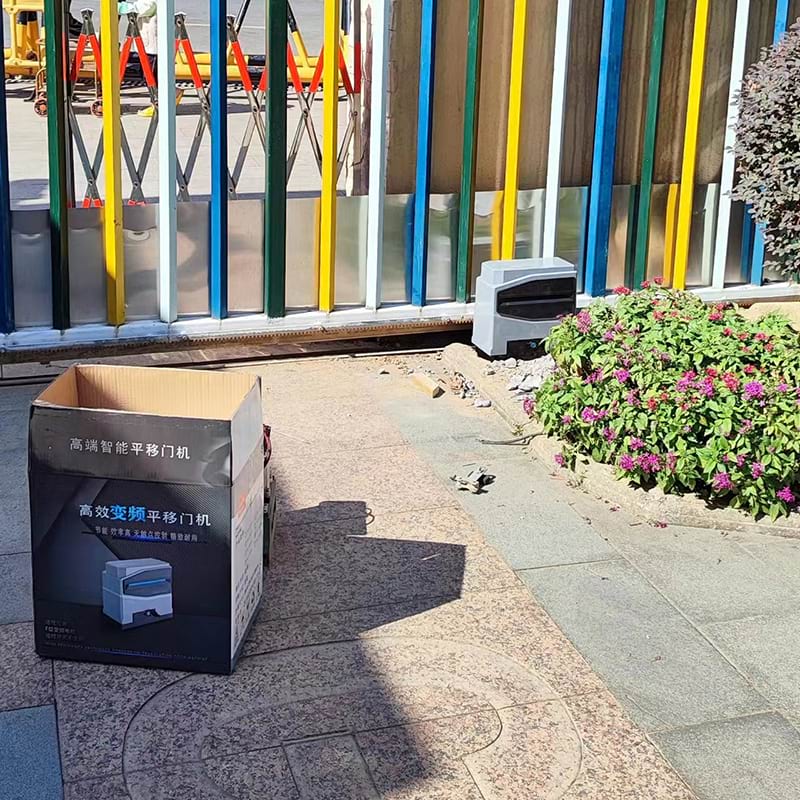Automatic gate openers are a modern solution for enhancing convenience and security for residential, commercial, and industrial properties. When selecting a gate opener, it’s essential to understand the differences between the three main types: sliding, swinging, and dual gate openers. Each type has distinct features, advantages, and applications, making it suitable for specific situations. Let’s explore how these gate openers differ and how to choose the right one for your needs.

Sliding gate openers operate by moving the gate horizontally along a track or rail. These systems are ideal for gates installed in areas with limited space behind the gate.
Uses a rack-and-pinion system or a chain drive to slide the gate open and closed.
Requires a straight, level track for smooth operation.
Can accommodate heavy and wide gates.
Space-Saving: Suitable for properties with limited room for a swinging gate.
High Security: Provides robust access control, as it is difficult to force open a sliding gate.
Heavy-Duty Capability: Can handle large, industrial gates, making it ideal for commercial or high-traffic areas.
Weather Resistance: Less prone to wind interference compared to swing gates.
Track Maintenance: Tracks must be kept clean and free of debris for smooth operation.
Installation Requirements: Requires a level surface and a proper track, which may increase installation complexity.
Limited Aesthetic Appeal: Sliding gates may not have the classic look of swing gates.
Driveways with limited depth or slope.
Industrial or commercial properties with large, heavy gates.
High-security areas requiring robust locking mechanisms.
Swinging gate openers are designed for gates that swing open and closed in an arc, similar to a door. They can be configured for single or dual-leaf operation.
Operates with linear actuators or articulated arms that push or pull the gate.
Can swing inward, outward, or both, depending on the property layout.
Typically easier to install than sliding gate systems.
Aesthetic Appeal: Swing gates often have a classic, elegant look, making them popular for residential properties.
Ease of Installation: Requires less groundwork compared to sliding gates.
Cost-Effective: Generally more affordable to install and maintain than sliding gates.
Space Requirement: Requires ample space for the gate to swing open fully, both inside and outside the property.
Wind Susceptibility: Swing gates are more affected by strong winds, which may hinder operation.
Limited Weight Capacity: Not ideal for extremely heavy gates, as they exert more force on hinges and posts.
Residential properties with adequate space for swinging gates.
Driveways without steep slopes.
Decorative or ornamental gate designs.
Dual gate openers are specifically designed for gates with two panels or leaves. These systems are commonly used for large entrances that require wider openings.
Operates both panels simultaneously, often with synchronized motors.
Available in both swing and sliding configurations, depending on the gate design.
Suitable for heavy or wide gates requiring balanced operation.
Wide Opening: Provides a larger entrance, accommodating larger vehicles or higher traffic volumes.
Balanced Load: Divides the weight and force between two panels, reducing strain on hinges or tracks.
Customizable Design: Works well with symmetrical, ornamental gates.
Higher Cost: Dual systems are more expensive than single-panel gate openers.
Complex Installation: Requires precise alignment and synchronization of both panels.
Maintenance Needs: May require more upkeep due to the added complexity of dual motors and components.
Wide driveways or entrances.
Properties requiring symmetrical or ornamental double-panel gates.
High-traffic residential or commercial areas.
| Feature | Sliding Gate Openers | Swinging Gate Openers | Dual Gate Openers |
|---|---|---|---|
| Operation | Slides horizontally along a track | Swings open in an arc | Operates two panels simultaneously |
| Space Requirement | Minimal space along the track path | Requires ample clearance to swing | Requires clearance for both panels |
| Weight Capacity | Handles heavier gates | Limited by hinge strength | Balanced weight distribution |
| Installation | More complex, requires track setup | Easier to install | More complex, requires synchronization |
| Maintenance | Requires track upkeep | Minimal, hinges and motor care | More maintenance due to dual components |
| Aesthetic Appeal | Functional, modern look | Traditional, elegant appearance | Symmetrical, decorative options |
| Best For | Tight spaces, heavy industrial gates | Residential, decorative gates | Wide driveways, large entrances |
When deciding between sliding, swinging, or dual gate openers, consider the following factors:
Space Availability:
If space is tight, a sliding gate is the best option.
Swing gates need ample clearance to avoid obstruction.
Security Needs:
Sliding gates are more secure and harder to breach, making them ideal for high-security areas.
Gate Size and Weight:
For larger and heavier gates, sliding or dual gate openers are better choices due to their ability to distribute weight effectively.
Budget:
Swing gates are generally the most cost-effective option for installation and maintenance.
Aesthetic Preferences:
If you prioritize style and elegance, swinging or dual gates may better suit your property.
Traffic Volume:
High-traffic properties or those with frequent vehicle movement benefit from sliding or dual gates for faster, wider access.
Sliding, swinging, and dual gate openers each offer unique advantages and disadvantages, catering to different property layouts, budgets, and security needs. Sliding gate openers are best for tight spaces and heavy-duty applications, while swinging gate openers provide a classic look and are ideal for residential settings. Dual gate openers combine style and functionality, making them suitable for larger entrances. By understanding your property’s specific requirements and limitations, you can select the gate opener that enhances both functionality and aesthetics.